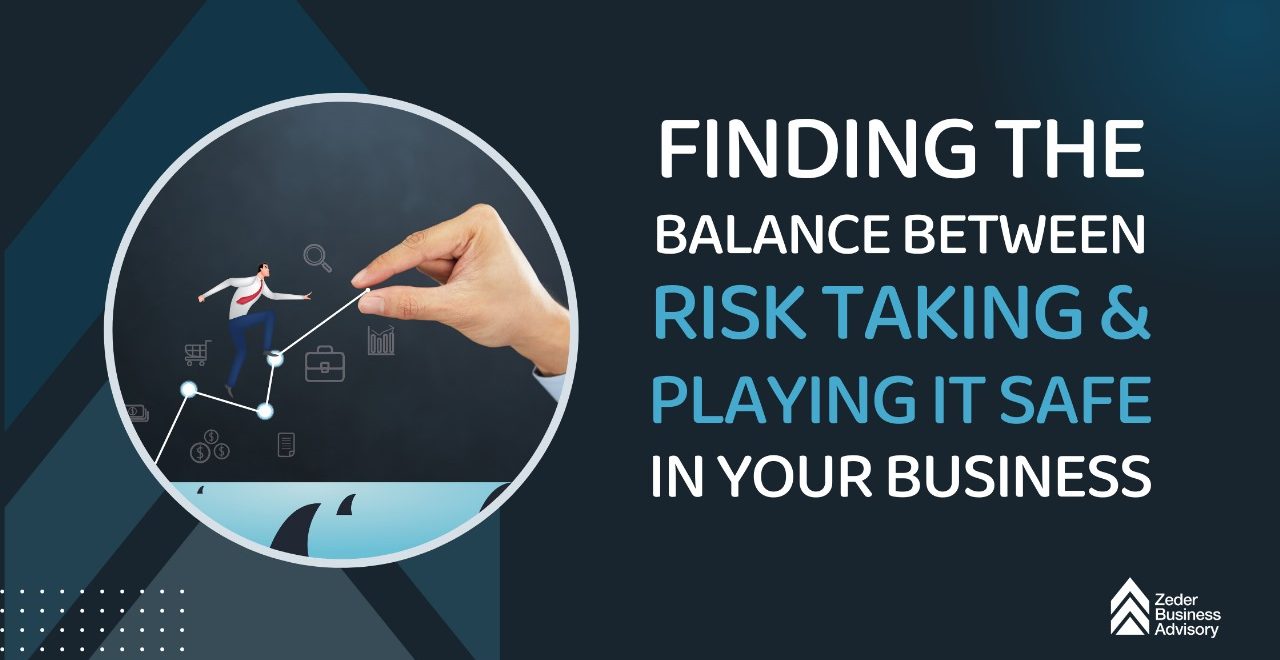When growing a business, finding the right balance between risk-taking and playing it safe can be a critical factor in determining the success of your venture.
Throughout my time as a business advisor, I have worked with clients who took too many risks too soon and ended up burning through their funding sources, and others who missed out on vital opportunities and fell behind their competition by being too cautious. Striking the perfect balance between these two approaches is a skill that every business owner or entrepreneur must develop. In this blog post, we will explore the importance of risk-taking, the benefits of playing it safe, and strategies for finding the delicate equilibrium that allows for growth while minimizing potential pitfalls.
The Importance of Risk-Taking
Taking risks is often considered the hallmark of successful entrepreneurs and business leaders, and there are many reasons why it can be so beneficial:
Innovation and Growth
Taking calculated risks can lead to innovation and exponential growth for your business. By exploring new ideas, markets, or technologies, you can gain a competitive edge and position your company as a leader in the industry.
Adaptation to Change
In today’s fast-paced business landscape, taking risks allows businesses to adapt to market shifts and changing consumer demands. It helps you stay ahead of the curve and ensures your company remains relevant.
Building Resilience
Risk-taking helps entrepreneurs confront their fear of failure. By embracing risks and learning from setbacks, you can build resilience, develop problem-solving skills, and cultivate a growth mindset, preparing your business for a better future
The Benefits of Playing it Safe
While risk-taking is essential, a more cautious approach can have its benefits too:
Stability and Consistency
Playing it safe provides stability and predictability, allowing for steady growth over time. It minimizes the likelihood of catastrophic failures and ensures the business can withstand economic downturns or market volatility.
Protecting Your Investments
When you stick with what you know, you reduce the chances of losing your investments or assets. This approach can be particularly crucial for small businesses or startups with limited resources.
Building Trust and Credibility
Consistently delivering on promises and meeting customer expectations builds trust and credibility. A steady approach helps maintain a positive reputation and fosters long-term relationships with clients, suppliers, and stakeholders.
Finding the Right Balance
Finding the right balance for your business is a delicate task, and it requires careful planning and thorough research into the risks and benefits.
Conduct Thorough Risk Assessments
Before making any major decisions, assess the potential risks and rewards involved. Evaluate the probability and impact of each risk and determine if the potential benefits outweigh the drawbacks.
Embrace a Test-and-Learn Approach
Instead of diving headfirst into high-risk ventures, adopt a test-and-learn approach. Experiment with smaller-scale projects, gather feedback and refine your strategies based on the results. Gradually increase your risk tolerance as you gain confidence and learn from your experiences.
Diversify Your Portfolio
Spreading your investments across different markets, products, or services can help mitigate risks. Diversification reduces the impact of failures in one area by leveraging successes in others.
Seek Expert Advice and Mentorship
Engage with industry experts, mentors, or business advisors who have experience in your field. Their insights can provide valuable guidance and help you make informed decisions that strike a balance between risk-taking and playing it safe.
Remember that finding the right balance is not a one-time achievement but an ongoing process. By understanding the importance of both approaches, continuously monitoring market conditions, and employing carefully planned strategies, you can navigate the complex landscape of decision-making to ensure long-term success in your business.
In conclusion, launching a new business requires careful consideration of a variety of funding sources to support your entrepreneurial journey. By considering the benefits and drawbacks of each funding source, you can find the right combination to turn your goals into a thriving reality.





